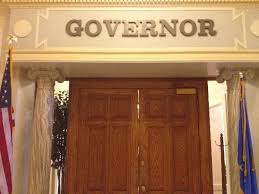
Whoever is elected Governor of Oklahoma later this year will have a lot to say about the impact of state government on the energy industry, whether it is oil and gas or wind.
As those in the energy industry decide who to support, SoonerPoll’s latest survey of voters shows Oklahoma City Mayor Mick Cornett is in the lead with nearly 24 percent.
Lieutenant Governor Todd Lamb is second at about 18 percent. But SoonerPoll founder Bill Shapard says the more interesting finding is that the number of undecideds since August has gone from 23 to 39 percent. Admittedly, it is early in any gubernatorial campaign but the increase in the undecideds is an obvious reflection that voters need more information about the candidates.
“It remains to be seen whether Cornett can be competitive in Tulsa as the sitting Oklahoma City mayor,” said Shapard, who went on to note that Oklahoma City mayors have not fared well in the past when running for any higher office.
Former U.S. Attorney Gary Richardson is at 9 percent.
Lamb’s support was much more consistent over all of the congressional districts with his largest support coming from the third congressional district, 27 percent, which includes Enid where he was born. Lamb, however, represented an Oklahoma City suburb in the state senate before being elected lieutenant governor in 2010.
“Lamb’s greatest strength is that he’s the sitting lieutenant governor, but it’s also his greatest weakness,” said Shapard. “Lt. Gov. Lamb is inevitably linked to the current administration, the on-going state budget fiasco, and Governor Fallin who has some of the lowest favorables of any recent governor.”
The polling results showed Richardson, a Tulsa trial lawyer saw his greatest support at 15 percent in the first congressional district. In the second district, he received 12 percent.
SoonerPoll.com, Oklahoma’s public opinion pollster, asked these questions of Oklahoma likely voters as part of the SoonerPoll Quarterly Poll.
The scientific study was conducted from January 4-9, 2018 with 409 likely Oklahoma voters selected at random statewide from a tri-frame of both landline telephone and cell phones, plus a online panel from Research Now. The sample was weighted by age, political party, sex and congressional district in order to reflect the Oklahoma likely voter population for a primary election. The weighting was conducted using a ‘layered technique.’
The sample reflects the traditional demographical profile of the Oklahoma likely voter with roughly half of respondents identifying as conservative and attending religious services once or more per week. The study has a Margin of Error (MoE) of ± 4.84 percent.





